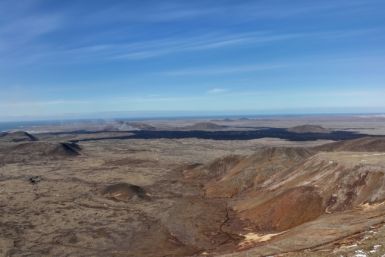2014 Meteor Shower: Orionids Meteor Shower To Peak On October 21, Sky Event To Offer Brilliant Fireball Display
Sky watchers will be able to observe a meteor shower display happening this October. The Orionids meteor shower is set to peak on Tuesday, Oct. 21, and Wednesday, Oct. 22, with visibility from both the northern and southern hemispheres.
According to an iTWire report, the sky watchers should be able to witness up to 25 meteors per hour during the Orionids meteor shower display. The best time to view the Oct. 21 meteor shower peak is during the early morning hours just before the crack of dawn.
The observers will also be able to witness some meteors before sunrise on Monday, Oct. 20, and Wednesday, Oct. 22. Furthermore, the meteor shower peak is expected to be a great viewing experience since the event will take place during the new or first phase of the moon.
The Orionids meteor shower, which spreads out from the Orion constellation, is a product of Halley's Comet. According to a Universe Today report, Halley's Comet is the source of two annual meteor showers that the sky watchers observe and they are the Eta Aquarids in May and the Orionids in October.
The report further claimed that the middle to the latter part of October is the fireball season of the sky display where a number of key meteor showers experience a broad peak. There is already a small increase in fireball activity coming from the observations of several all-sky cameras including NASA's (National Aeronautics and Space Administration) system situated across the United States.
Sky watchers are suggested to sit back and patiently scan the night sky in order to view the Orionids meteor shower display. The sky watchers must make an extensive observation across the night sky during the meteor shower peak because the Orionids will be streaking in all directions.
Aside from the Orionids meteor shower display this October, a Tucson News Now report claims a partial solar eclipse will be the final sky event for the sky watchers. The eclipse will take place on Thursday, Oct. 23, starting at 12:37 p.m. local time.
The event will reach maximum eclipse at 2:45 p.m. before it ends at 4:51 p.m. A special protective eyewear is recommended to be used before viewing the solar eclipse so the observer's eyes will not be damaged.






